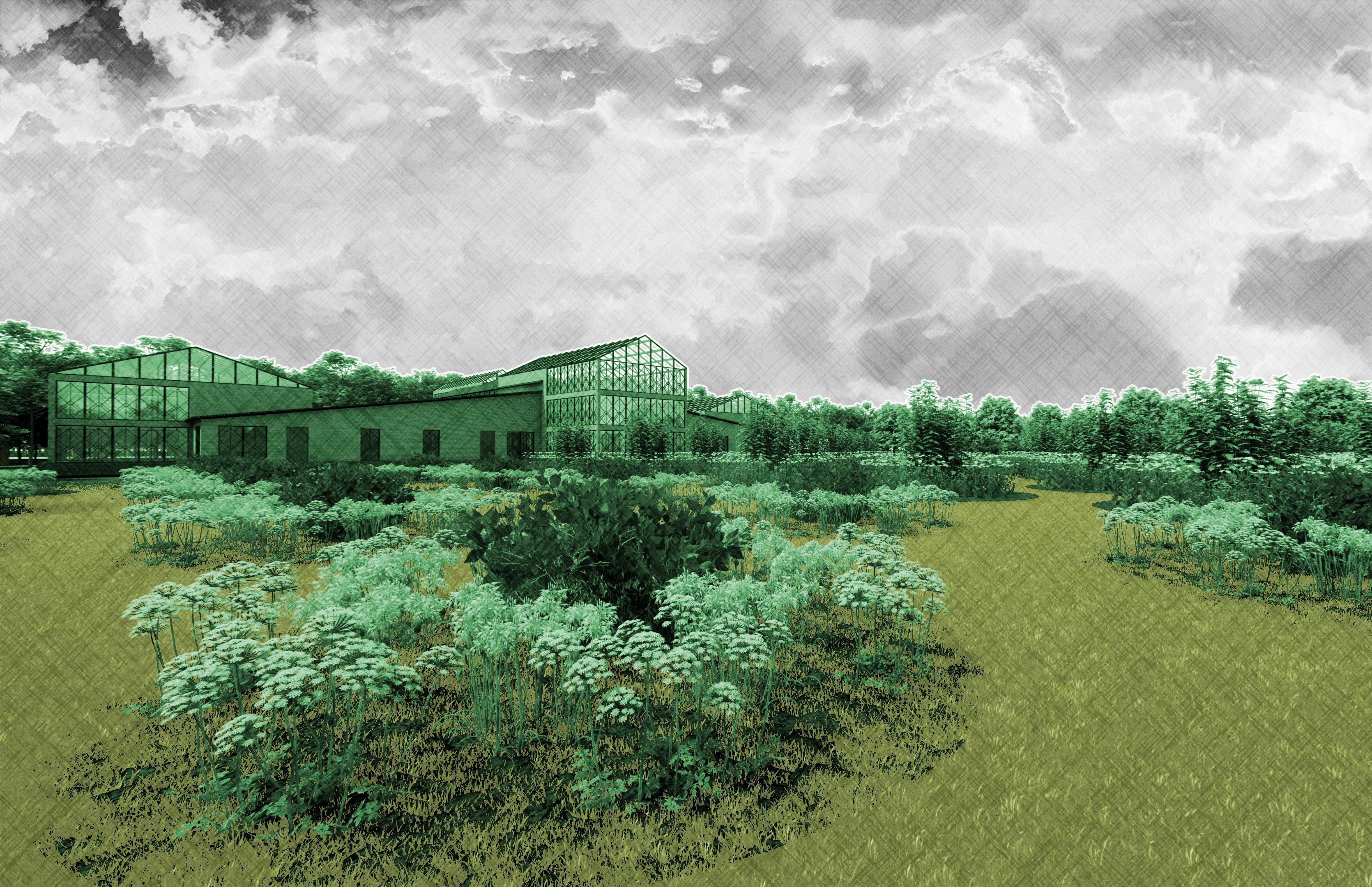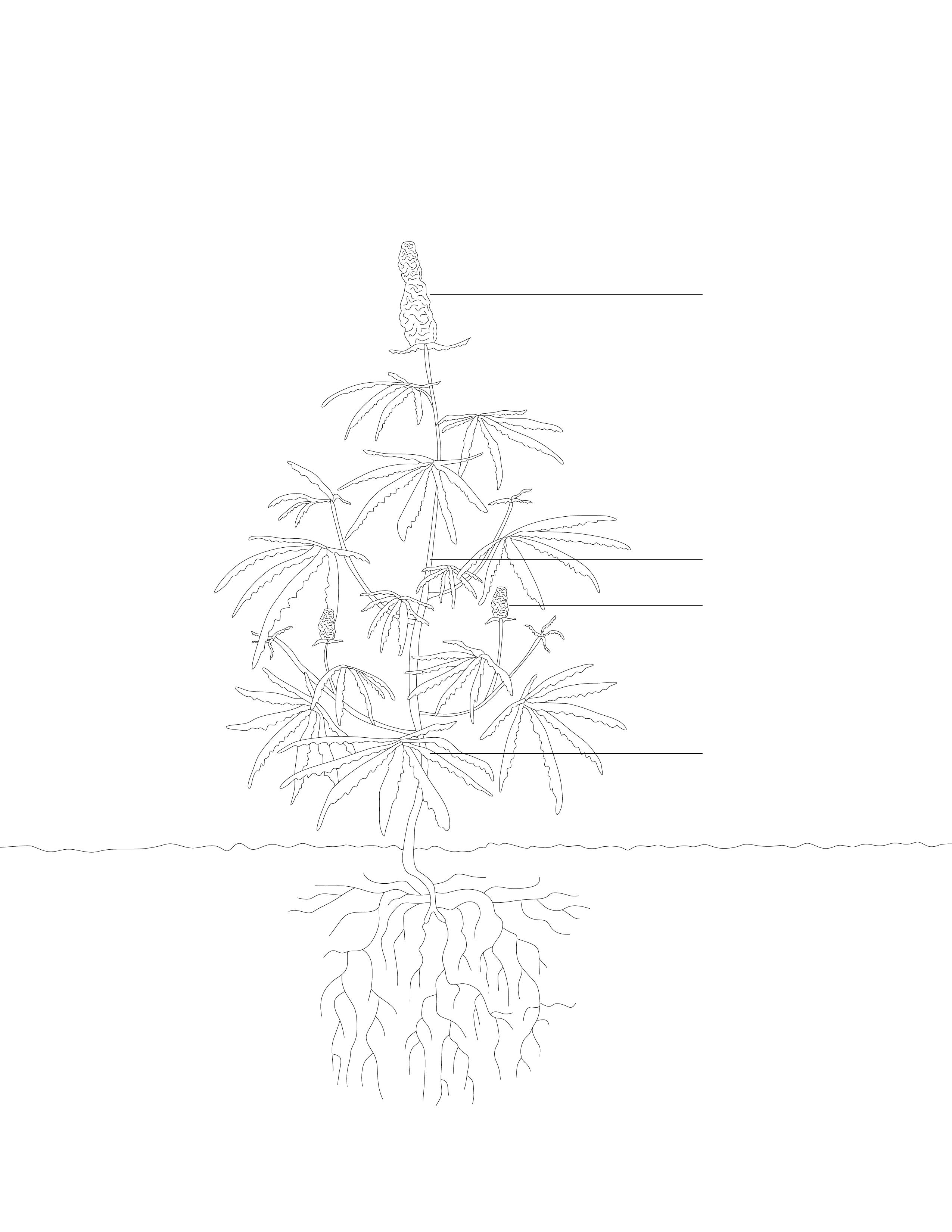










Poaceae | Panicoideae
Featuring a corn-like stem and leaf system, sorghum is a member of the grass family that is categorized into three different families: Sweet, grain, and grass. Annually, this plant can grow between six and ten feet tall, placed 30 to 36 inches off-center from one another. like many other crops, narrower rows of sorghum allow for a reduction of persistent weeds and help with reducing soil erosion. Typically, sorghum is planted in may with a seed depth of 1 inch, allowing for a bloom in the summertime. sorghum as a crop can be handled as a no-till crop, but does require soil that is well-drained.
Sweet Sorghum : Less grass-like, more cane-like. Grown for sugar production, forage, and silage. Can also be used to create ethanol, similar to corn.
Grain Sorghum : Grown for livestock feed.
Grass Sorghum : Grown for hay and green feed.
Typical Yields per Acre in the United States:
Irrigated : 86.9 bu.
Partially Irrigated : 74.7 bu.
Not Irrigated : 69.2 bu.
Marketing Strategies:
Waxy Sorghums : Possible adhesives for fabrics and papers
Sweet Sorghum : Syrup products
Butyl Alcohol and Grain
Wallboard for Houses

Cannabis sativa cultivars
Often perceived as one of the most controversial plants today, Hemp is one of the most versatile and resilient crops that have been cultivated by farmers for thousands of years. Beyond being one of the fastest growing plants in the world, the byproducts produced by Hemp have the ability to influence a variety of products, both commercial and medicinal. The roots of the hemp plant have the ability to not only improve the structure of soil, but also can phytoremediate any contaminated soil. Hemp should be planted between 1/2 and 3/4 in. below the soil, spaced approximately 2 feet from one another.
Industrial Hemp : Grown for building materials, fabrics, supplements, cosmetics, paper, and textiles
Floral Hemp : Grown for products containing Cannabidiol (CBD), shampoos, skin creams, and supplements.
Grain Hemp : Grown for crushed seed oil and supplements.
Fiber Hemp : Grown for insulation, building materials, composites, plastics, cosmetics, biofuel, food, and textiles.
Seed Hemp : Grown for supplements and food products.
Fiber Hemp : 3-6 tons per acre
Grain / Seed Hemp : 600-800, 1200 pounds per acre
Floral Hemp : 1000-3000 pounds per acre
Marketing Strategies:
Commercial Products : Paper, rope, textiles, clothing, biodegradable plastics, paints, biofuel, food, animal feed, insulation, building materials
Medicinal Products: Cannabidiol (CBD)

Rosaceae
One of the most ideal crops for the Iowan climate, Aronia is a cold-hardy shrub that is droughttolerant once established in a given area. Once established, this bush has an average lifespan between 20 and 25 years, only further benefitted by the low maintenance required. When placed upon sloped environments - such as the various hilled zones of Iowa - Aronia can help prevent any soil erosion and resists a majority of common pests and diseases that plague other crop species. In recent years, Aronia has gained recognition as being one the “superfoods” of Earth, being rich in Vitamins A, C, and E, as well as being high in antioxidants, iron, and magnanese. This product can be eaten as is, or transformed into supplements, jams, ajuices, or wines. Aronia require a soil depth of 8 inches, with placement being 2 feet off-center.
Red Chokeberry : Grown for landscaping, traditional medicines, jellies, and preserves.
Black Chokeberry : Grown for direct consumption, jams, juices, jellies, wine, supplements, food coloring, baked goods, syrups, dried food products.
Purple Chokeberry : Grown for juice production, ornamental use, and limited food p roducts.
Typical Yields per Acre in the United States:
Red Chokeberry : 1000-3000 pounds per acre
Black Chokeberry : 6000-12000 (mature), 15000 (peak) pounds per acre
Purple Chokeberry : 3000-6000 pounds per acre
Marketing Strategies:
Commercial Products : Direct consumption, supplements, jams, jellies, juices, baked goods, wines, powders, ornamentation, dyes.

Fruit / Nut
Pistillate Flowers
Corylus avellana x americana
A cross between the American Hazelnut and the European Filbert, the Hybridized Hazelnut is a shrub that can produce both an edible resource and provide habitation to birds and other wildlife species. Growing to be just under 7 feet tall, the Hybridized Hazelnut flowers from March through the end of May, with the hazelnuts being produced from July until the end of September. This shrub is often considered to be a more sustainable alternative to almonds, requiring less water to maintain, less reliance on chemicals, and above all, reduces topsoil loss from agricultural practices. Hybridized Hazelnuts should be planted no deeper than 3 inches below the soil, with spacing being between 15 and 18 feet from one another.
Hybridized Hazelnut : Grown for food, habitat restoration, and natural windbreaks.
Hybridized Hazelnut : 1000-2500, up to 4000 pounds per acre
Marketing Strategies:
Commercial Products : Biofuel, direct consumption, chocolate spreads, baked goods, dressing oil, animal feed
Farmstead: Habitat restoration, windbreak

Secale cereale
Grown primarily in colder regions, rye is a grass that can reduce the necessity for pesticides, fertilizers, and sequester carbon, all while improving the overall health of soil. The deep roots of rye help prevent erosion and runoff and are able to allow for both water retention and penetration. Often, rye is planted as a cover crop during off-seasons of specialty or row crops, due to its ability to absorb nitrates that may persist from previous harvests. Beyond being a cover crop, rye is commonly used in cooking and beverages. Rye should be planted 2 inches below the surface, spaced 3 inches apart. If growing rye specifically for cereal based products in junction with other cover crops, spacing should be approximately 8 inches apart.
Winter Rye : Grown for food, beverages, animal feed, and as a cover crop. Winter rye is planted in the fall, with harvest taking place at the beginning of summer, creating a final product described as having a spicier, stronger flavor.
Spring Rye : Grown for food, beverages, animal feed, and as a cover crop. Winter rye is planted in the spring, with harvest taking place at the end of the harvest season, creating a final product described as having a floral, mild flavor.
Cover Crop Rye : 35-50 bu.
Grain Oriented Rye : 30-60 bu.
Forage Oriented Rye : 2-4 tons per acre
Marketing Strategies:
Commercial Products : Alcohol, cereal, livestock feed, flour, direct consumption
Farmstead: Cover crop

Rubus ideaus
As a long-lasting perennial crop, raspberries have high potentials for both humans and local wildlife. These shrubs provide an ideal habitat for beneficial insects and pollinators, allowing for local regions to maintain a prosperous ecosystem. The soil raspberries are planted in also see benefits, due to the accumulation of organic matter as time passes on, as well as the low chemical reliance needed to maintain a healthy crop. Raspberries should be planted with moderate to high water usage in mind, however. While typically harvested for direct consumption, or transformed into juices, jams, and purees, recent studies into agri-food wastes indicate that the raspberry, among other agri-food wastes, may serve as a ideal source for bioactive chemicals. Raspberries should be planted between 1 and 2 inches below the surface, spaced 18 to 24 inches apart from one another.
Primocane-bearing Raspberries : Grown for direct consumption, supplements, jams, juices, purees, beverage additive, and agri-food waste. This raspberry classification bears its fruit during the same season planted. If planted outside of a high tunnel, harvest takes place at the end of summer, lasting until the first fall’s frost.
Floricane-bearing Raspberries : Grown for direct consumption, supplements, jams, juices, purees, beverage additive, and agri-food waste. This raspberry classification does not produce fruits during the first year, and only begins to see ideal yields from the third year of planting onward. The fruit from this classification ripens in the summer.
Primocane-bearing Raspberries : 4000-6000 (open field) or 8000-12000 (high tunnel) pounds per acre
Floricane-bearing Raspberries : 3000-5000 (open field) or 6000-10000 (high tunnel) pounds per acre
Marketing Strategies:
Medicinal Products: Direct consumption, jams, juices, purees, supplements, biofuel, additive

Rubus subg. Rubus
With the ability to grow both as a shrub and a trailing vine, blackberries are a highyield crop that is considered to produce a superfruit. Beyond containing Vitamins C, E, and K, blackberries are considered to be antioxidants with the capability to prevent cancer, support oral health, support healthy digestion, and improve one’s own cardiovascular health. Beyond direct consumption, blackberries are often transformed into syrups, jams, jellies, supplements, and alcoholic beverages. When it comes to planting, blackberries should be placed 2 feet below the surface, spaced 3 to 4 feet apart from one another.
: Grown for direct consumption, jams, jellies, syrups, supplements, dyes, and alcoholic beverages. Erect / Semi-Erect Blackberries feature stiff, arching canes and are more suitable to colder climates. Blackberries in this family do not fruit until their second year of being planted.
Trailing Blackberries : Grown for direct consumption, jams, jellies, syrups, supplements, dyes, and alcoholic beverages. Canes in this classification grow along the ground unless supported by a trellis system. Trailing Blackberries are more susceptible to frost and cold environments, yet produce berries that are both larger and sweeter than erect blackberry species after two years of planting.
Primocane-fruiting Blackberries : Grown for direct consumption, jams, jellies, syrups, supplements, dyes, and alcoholic beverages. This family of blackberries are new in blackberry breeding, and are able to produce fruit on the first year of planting. While having an extended harvesting season, Primocane-fruiting Blackberries often have low yields.
Erect / Semi-Erect Blackberries : 8000-10000 (mature) or 12000-15000 (high tunnel) pounds per acre
Trailing Blackberries : 6000-8000 (mature) or 10000-12000 (high tunnel) pounds per acre
Primocane-fruiting Blackberries : 4000-6000 (mature) or 8000-10000 (high tunnel) pounds per acre
Marketing Strategies:
Commercial Products : Direct consumption, supplements, dyes, alcohol, cooking products

Fragaria x ananassa
One of the most commonly eaten fruits in the entire world, the strawberry is believed to have several health benefits. Among each of the ten species within the strawberry family, the berry and subsequent seeds have been found to be low in overall calorie count, help prevent inflammatory conditions, help with digestion and type-2 diabetes side effects, alleviate pain, fuel beneficial bacteria within our body, and help with memory loss. Nutrients the strawberry is rich in include Vitamin C, potassium, fiber, and antioxidants. Strawberries can be eaten directly, or turned into various food-related products or alcoholic beverages. Strawberries only require 4 to 6 inches of soil for their roots, with spacing ideally being between 12 and 18 inches apart.
Strawberry : Grown for direct consumption, food related products, and alcohol.
Matted Row System (June-bearing) : 10000-15000 pounds per acre
Plasticulture System (June-bearing) : 15000-17500 pounds per acre
High Tunnel Production : 20000-25000 pounds per acre
Day-Neutral Varieties : 15000-20000 (field) or 30000 (high tunnel) pounds per acre
Marketing Strategies:
Commercial Products : Direct consumption, jams, jellies, purees, syrups, supplements, alcohol, dyes, food additive

One of the most utilized plants for cuisine in the world, the tomato is a plant that produces an edible berry that is commonly perceived as a vegetable. While prone to pests and possible disease, proper maintanence and housing can allow for the cultivation and harvests of a family with thousands of different cultivars, each varying in flavor, color, and shape. Tomatoes are rich in Vitamin C, have evident antioxidants, help with inflammation, and are shown to improve brain, heart, and prostate health in individuals. The tomato plant should be planted two-thirds of received length, spaced between 2 to 3 feet apart if a determinate tomato, or spaced 3 to 4 feet apart if an indeterminate tomato.
Determinate Tomato : Grown for direct consumption or as additive for food products. Determinate tomatoes are considered to be compact, ceasing their growth at a certain height before producing all fruits within a shortened time period.
Indeterminate Tomato : Grown for direct consumption or as additive for food products. Indeterminate tomatoes are larger and prone to sprawl, growing flowers and fruits from growth until the first frost of fall. These tomatoes require more support and maintenance to avoid disease.
Determinate Tomato : 8-10 (field grown), 15-20 (optimized) tons per acre, 2500-3000 (small farm) pounds per acre
Indeterminate Tomato : 15-20 (field grown), 30-40 (optimized) tons per acre, 4000-6000 (small farm) pounds per acre
Marketing Strategies:
Commercial Products : Direct consumption, food additive

Various
A colloquial term, microgreens are the young, edible seedlings of various leafy greens species, harvested when their is the development of one true set of cotyledon leaves. Microgreens are believed to be akin to superfoods, providing individuals with various vitamins, fiber, minerals and antioxidants upon consumption. While requiring minimal resources to cultivate and having a short production cycle, microgreens in their current state suffer from short shelf lifes and distribution difficulties. Studies and tests are ongoing by agricultural scientists, however, with long-term ambitions aimed towards making microgreens a more financially viable crop for consumption by the common person without fear of quick expiration.
Mircrogreens : Grown for direct consumption or as additive for food products.
Typical Yields per Acre in the United States:
Single Harvest : 87120-174240 pounds per acre *
Multiple Harvests : 1.7-5.2 million pounds per acre *
* Microgreens such as Basil and Arugula will be prone to producing less product per acre on annual basis than other microgreens. In contrast, sunflowers and peas tend to be higher than normal producers.
Marketing Strategies:
Commercial Products : Direct consumption, food additive

Various
By definition, specialty mushrooms are mushrooms that do not belong to the genus Agaricus. Seven of the most popular mushrooms within this categorization include Lion’s mane, shiitake, chestnut, maitake, oyster, enoki, and chanterelle mushrooms. Providing fiber, protein, antioxidants, minerals, and various vitamins depending on species, mushrooms are a commonly eaten food that can vary in flavor drastically. Mushrooms within an ecological setting are one of the cornerstones of a healthy biome, often taking on the role of breaking down and consuming deteriorating flora and fauna. For farm cultivation, planting can vary on species, with many requiring 2 to 6 inches in soil depth, or even simple impregnation of wood logs. Spacing of mushrooms also varies, though it is recommended to give roughly 8 to 10 inches between mushrooms.
Specialty Mushrooms : Grown for direct consumption or as additive for food products.
Lion’s Mane : 80000-120000 pounds per acre
Shiitake : 12000-15000 (outdoor log) or 40000-60000 (sawdust indoor blocks) pounds per acre
Chestnut : 217000-350000 pounds per acre
Maitake : 87000-175000 pounds per acre
Oyster : 150000-200000 pounds per acre
Enoki : 522000-696000 pounds per acre
Chanterelle : 50-150 pounds per acre (wild foraged)
Marketing Strategies:
Commercial Products : Direct consumption, food additive

Asparagus officinalis
A cold hardy perennial plant, Asparagus is a vegetable crop commonly utilized as an additive in cuisine. Asparagus is rich in Vitamins A, B, C, E, and K, as well as containing antioxidants, iron, magnesium, and calcium. Combined into a crop that is easy to cook and digest, the health benefits of Asparagus help one control their blood sugar levels, bone health, general immune system, cardiovascular system, and mitigate inflammatory issues. Asparagus should be planted roughly 2 inches deep into the soil, spaced 12 to 18 inches apart from one another.
Asparagus : Grown for direct consumption.
Typical Yields per Acre in the United States:
Average Yield : 2000-4000 pounds per acre
High-Performing Yield : 5000-6000 pounds per acre
Commercial Operation : 7000-8000 pounds per acre
Marketing Strategies:
Commercial Products : Direct consumption

Various
In stark contrast to typical farm crops, flower farms are an often forgotten in dialogue regarding agriculture land cultivation. When cut, flowers can be used for boutiques, ceremonies, and other events, soley based on who the customer in question is. As these flowers propogate, the plants act as a haven for pollinators and local wildlife, giving rise to a healthy soil body. Ideally, native flower species should be planted.
Cut Flowers : Grown for direct purchase.
Typical Yields per Acre in the United States:
Sunflowers : 24000-36000 stems per acre
Zinnias : 30000-45000 stems per acre
Dahlias : 15000-25000 stems per acre
Peonies : 12000-16000 stems per acre
Marketing Strategies:
Commercial Products : Bouquets, floral arrangements.

Various
Culinary Herbs is a broad definition for herbal plants that are often used as food additives during the cooking process. They include, but aren’t limited to: basil, cilantro, chives, sage, marjoram, lavender, artemisia, dill, oregano, parsley, bay leaves, lemongrass, borage, rosemary, thyme, mint, tarragon, chervil, fennel, and chamomile. Drastically different tastes and benefits, culinary herbs are widely sought after due to their abilities when it comes to enhancing dishes. Mandated soil and spacing vary between species, but most herbs stated allow for high density propogation and cultivation.
Cut Flowers : Grown for direct consumption and food additives.
Basil : 12000-16000 pounds per acre
Cilantro : 8000-12000 pounds per acre
Parsley : 15000-20000 pounds per acre
Dill : 10000-15000 pounds per acre
Oregano : 4000-6000 pounds per acre
Thyme : 3000-5000 pounds per acre
Sage : 3000-4500 pounds per acre
Mint : 6000-8000 pounds per acre
*Yields of most common culinary herbs
Marketing Strategies:
Commercial Products : Direct consumption, food additive, oils

A common additive to cuisine, garlic is bulbous flowering plant that is often recognized from its strong, yet enriching, flavor. What is often not spoken about, however, is the health benefits of garlic compared to many other cultivated plants. Garlic is often used to mitigate the severity of the common cold, manage blood cholesterol and blood pressure, support the cardiovascular system, and even reduce injury and damage to the liver. Garlic should be planted 1 to 3 inches below the surface, with spacing being 4 to 8 inches apart from one another.
Garlic : Grown for direct consumption and food additives.
Typical Yields per Acre in the United States:
Average Yield : 8000-12000 pounds per acre
High Performing Field : 15000-18000 pounds per acre
Exceptional Yields : 20000 pounds per acre
Marketing Strategies:
Commercial Products : Direct consumption, food additive, oils

Castanae
Coming in both shrub and tree form, the chestnut family are some of the most hardy species that also produce a healthy, edible nut. Chestnuts are known for having deep root systems that improve soil quality and fertility, even allowing for better water retention and penetration. Both the tree and the nut benefit local wildlife, allowing for a restoration of woodland ecosystems. The nut itself is considered to be nutrient rich in antioxidants, fiber, Vitamin C, magnesium, and potassium. The chestnut should be planted roughly 1 inch below the surface, with spacing being 30 to 40 feet apart from one another.
Chestnut : Grown for direct consumption, food additives, home goods, oil.
Young Orchard : 500-1500 pounds per acre
Mature Orchard : 2000-5000 pounds per acre
Full Maturity Orchard : 3000-6000 pounds per acre
Commercial Products : Direct consumption, food additive, oils, woodwork goods, Stem
Marketing Strategies:

Juglans nigra
Considered to be the most valuable tree in Iowa, the Black Walnut is a native tree species that is prized for both its wood and produced nut. The wood itself from the tree is used as part of Iowa’s walnut lumber and veneer industries, with both the rich color and grain being perceived as of high quality. The walnuts produced from the Black Walnut is eaten either through direct consumption or through being added to baked goods. Black Walnuts should be planted 2 to 3 inches below the surface of the soil, with spacing being 30 to 40 feet apart for nut production, or 10 feet apart from one another for timber production.
Black Walnut : Grown for direct consumption, food additives, home goods, oil.
Young Orchard : 1000-2000 pounds per acre
Mature Orchard : 2000-4000 pounds per acre
Full Maturity Orchard : 6000 pounds per acre
Marketing Strategies:
Commercial Products : Direct consumption, food additive, oils, lumber, veneer, woodworks

Typical returns on crops within the United States per Acre, with shown crops being either already existant within Iowa as a crop, or having potential to becoming an alternative crop for cultivation. Prices will range on annual basis, based on supply and demand of each crop.
1. Greenhouse Tomatoes (high tunnel): $100,000-150,000/acre
2. Microgreens (indoor/greenhouse): $80,000-120,000/acre
3. Specialty Mushrooms (controlled environment): $60,000-100,000/acre
4. Cannabis Hemp (CBD/flowers, if legally permitted): $40,000-60,000/acre
5. Culinary Herbs (fresh market): $30,000-45,000/acre
6. Cut Flowers: $25,000-40,000/acre
7. Garlic (specialty varieties): $20,000-35,000/acre
8. Strawberries (high tunnel): $18,000-30,000/acre
9. Raspberries (high tunnel): $15,000-25,000/acre
10. Blackberries (high tunnel): $12,000-20,000/acre
11. Asparagus: $10,000-15,000/acre
12. Sweet Corn (fresh market): $8,000-12,000/acre
Note: Dashed box indicates current crops grown in high quantity within Iowa. Iowa is currently the number one producer of corn (primarily field corn), soybeans, and is the sixth largest producer of wine grapes in the nation.